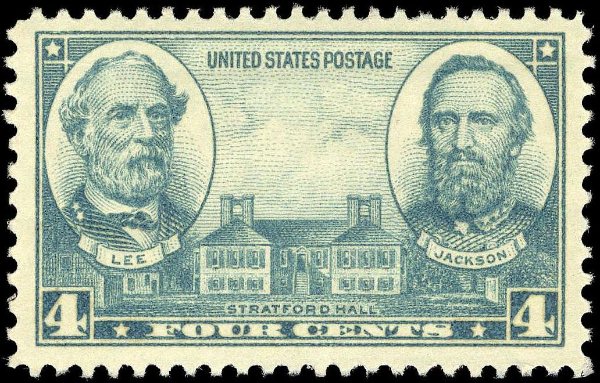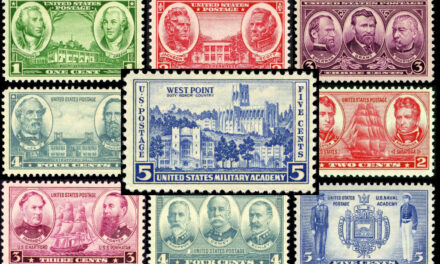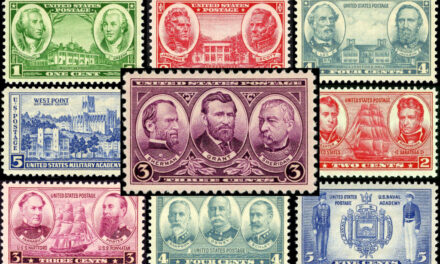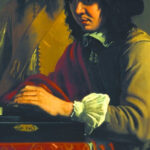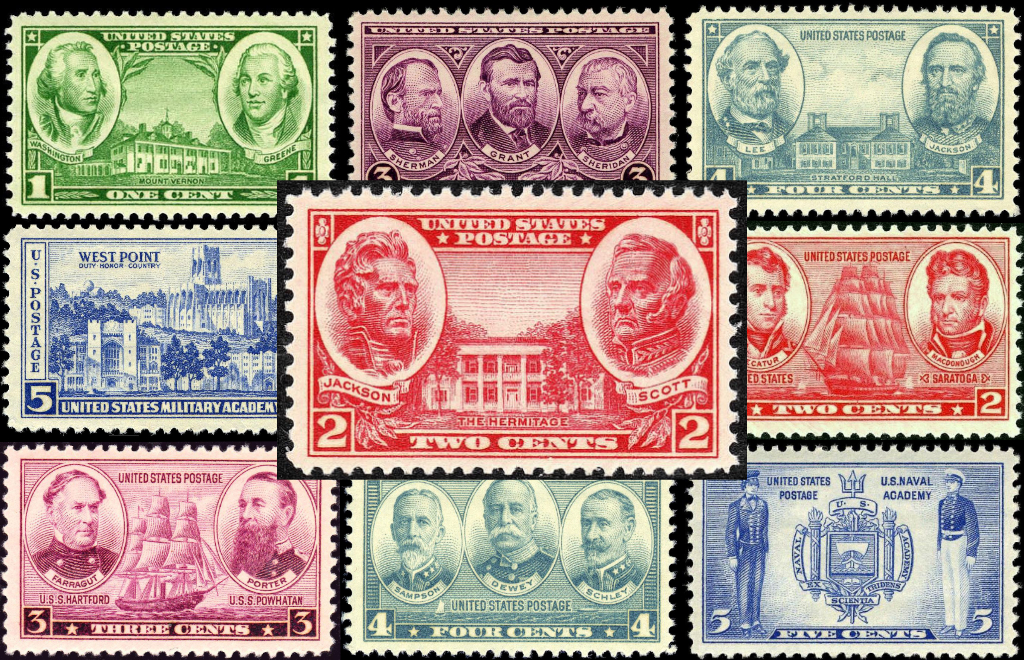
2-Cent 1937 Army Stamp: Andrew Jackson, Winfield Scott, and The Hermitage
Andrew Jackson and Winfield Scott, prominent heroes of the War of 1812, are the featured generals on the second stamp in the 1936–1937 series of Army commemoratives. The stamp also shows a view of The Hermitage, Jackson’s estate in Nashville, Tennessee.
The 2-cent stamp is the second in a series of five stamps that were issued between December 1936 and May 1937 to honor some of America’s most significant Army officers of the 18th and 19th centuries. A parallel set of Navy commemoratives, including the 2-cent stamp featuring naval heroes Stephen Decatur and Thomas Macdonough, was issued on the same dates as the Army stamps.
The Design and Issuance of the 2-Cent 1937 Army Stamp

The 2-cent 1937 Army stamp features portraits of Generals Andrew Jackson and Winfield Scott and a view of The Hermitage. (U.S. Post Office — U.S. Bureau of Engraving and Printing, Public domain, via Wikimedia Commons)
The Other Stamps in the 1936–1937 Army Series
Major General Andrew Jackson (1767–1845)
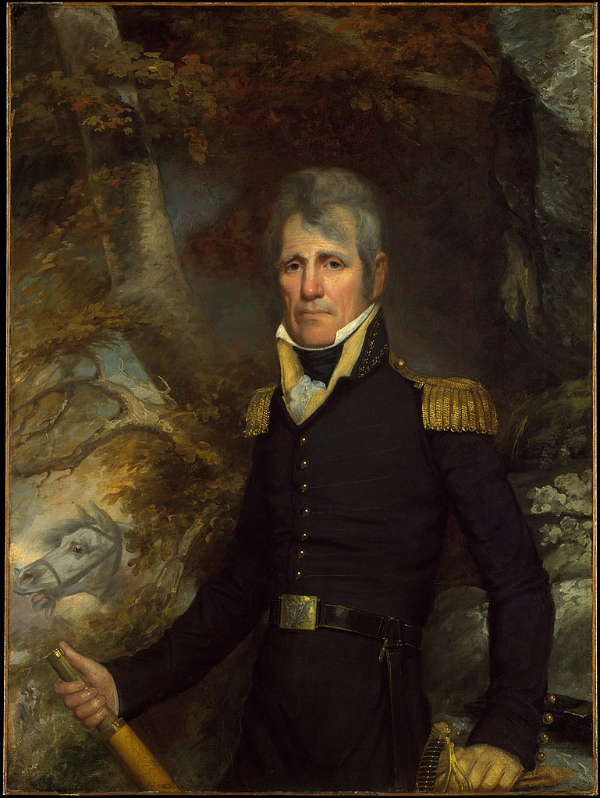
General Andrew Jackson in a portrait by John Wesley Jarvis. (Collection of the Metropolitan Museum of Art, CC0, via Wikimedia Commons)
Andrew Jackson’s military career began at age 13, when he volunteered to fight with the local militia in the Revolutionary War. He saw battlefield action, was captured by the British, and almost died of smallpox.
In 1812, when the United States declared war on Britain, Jackson volunteered and was commissioned as Major General of U.S. Volunteers. Enduring hardships with his troops, he was nicknamed “Old Hickory” for his toughness. In 1813–1814, Jackson led troops against the Creeks and defeated them. Despite his lack of military training, he was given a commission as a Major General in the U.S. Army.
In January 1815, Jackson resoundingly defeated the British in the Battle of New Orleans with an army of regular U.S. troops, militiamen, and other volunteers. Although the battle occurred—unbeknownst to both sides—after the peace treaty was signed to end the War of 1812, Jackson became a national hero.
Jackson was nominated for President in 1824 but lost to John Quincy Adams despite winning the popular vote. In 1828, however, Jackson was elected as the seventh President of the United States and served two terms.
General of the Army Winfield Scott (1786–1866)
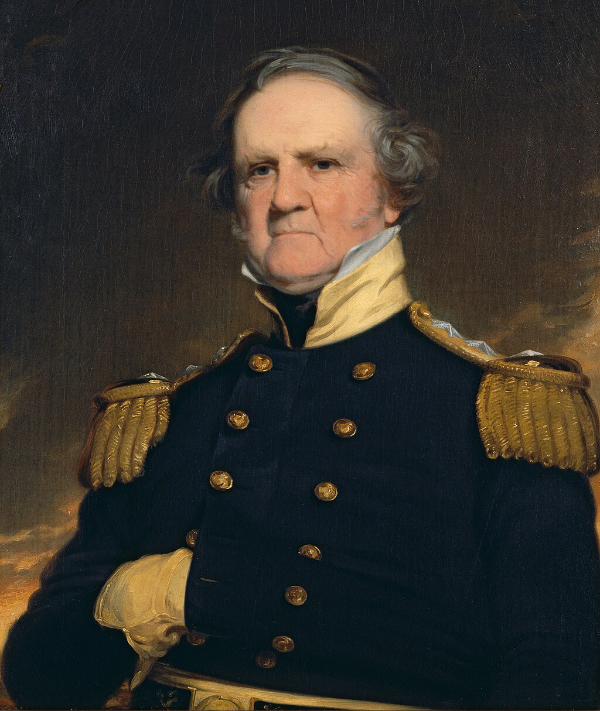
Winfield Scott in a portrait by Robert Walter Weir, 1855. (National Portrait Gallery, Public domain, via Wikimedia Commons)
Winfield Scott served in the U.S. Army as a general on active duty longer than any other person.
He first commanded forces in the Niagara campaign during the War of 1812 and rose steadily through the ranks. Held for a time by the British as a prisoner of war and suffering serious injuries in the Battle of Lundy’s Lane, Scott was promoted to Brigadier General for his valor. Scott also saw service in the Indian Wars and supervised the 1838 Cherokee Removal that became known as the Trail of Tears.
In 1841 he was named Commanding General of the Army. A national hero after the Mexican-American War, Scott was the unsuccessful nominee of the Whig Party for President in 1852. Although he was in ill health by 1861 and resigned from the Army, he developed a strategy that ultimately proved successful for the Union Army in the Civil War.
The Hermitage: Andrew Jackson's Estate
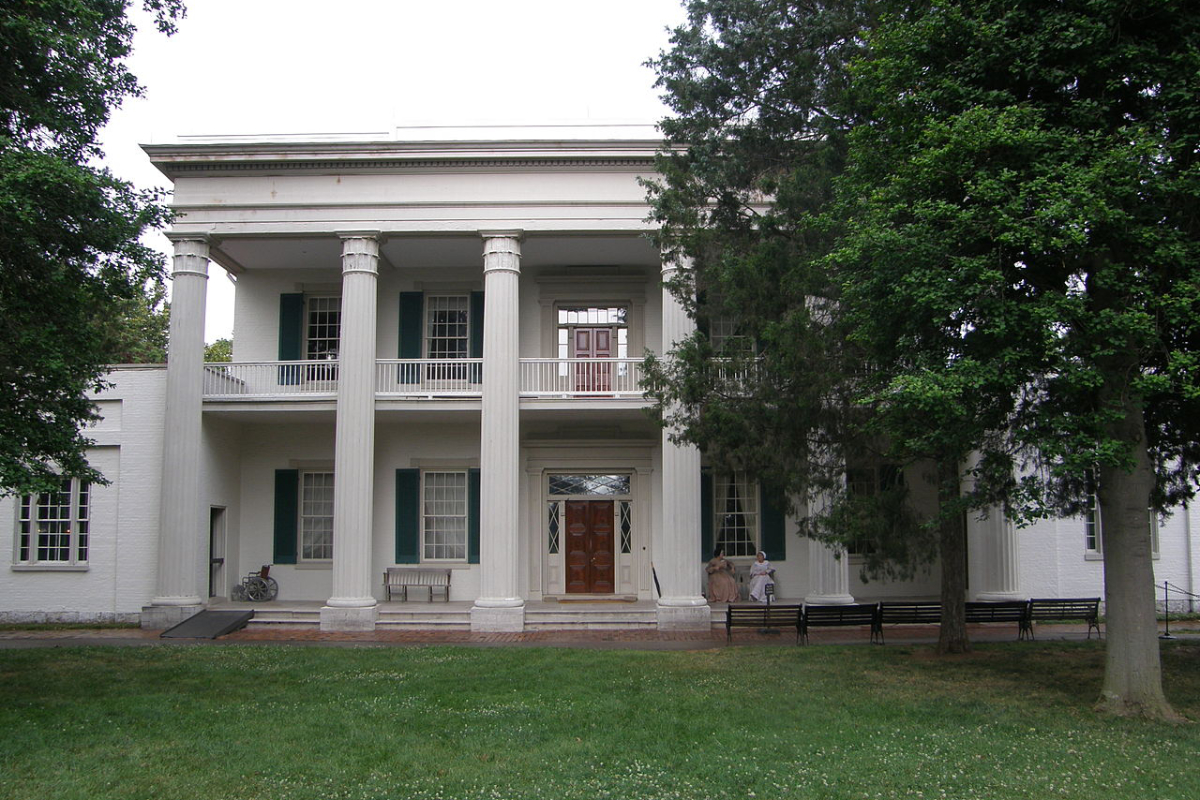
Andrew Jackson's home, The Hermitage, near Nashville, Tennessee. (Jim Bowen from Zhenhai, China (cropped), CC BY 2.0, via Wikimedia Commons)
The 2-cent 1937 Army stamp also features an engraving of Andrew Jackson’s mansion, The Hermitage, in Tennessee.
Andrew Jackson bought the Nashville property that became The Hermitage in 1804. Initially, the house was a log farmhouse. Jackson developed the property into a prosperous cotton plantation, worked by slaves. He also bred and raised racehorses. In 1819, Jackson began construction of a large Federal-style house, formal gardens, and numerous brick outbuildings, and in 1821, Jackson and his wife Rachel moved into the new house.
Tragically, Rachel died soon after Jackson was elected President in 1828. Jackson’s son and friends managed The Hermitage while Jackson was in Washington, but he returned there after he left the office and lived in The Hermitage until his death in 1845.
In the 1850s, the State of Tennessee bought a portion of the property, including the mansion and outbuildings, but allowed the Jackson family to remain as tenants. The property gradually fell into disrepair, but in 1888 a group of Tennessee women formed The Ladies’ Hermitage Association, modeled after the Mount Vernon Ladies’ Association, and preservation efforts began.
In 1960, the National Park Service designated The Hermitage as a National Historic Landmark. The Hermitage is open to visitors and hosts many special events.
A Window into American History
The 2-cent 1937 Army stamp featuring Generals Andrew Jackson and Winfield Scott commemorates their heroism in the War of 1812. It can serve as a jumping-off point to learn about that war and about the two men whose portraits appear on the stamp.
This stamp and the others in the series can introduce students and others to important figures, places, and events in American history. The United States has issued hundreds of commemorative stamps that tell interesting stories about our history. Thousands of others have been issued around the world, all with their own stories to tell.
Copyright © Brian Lokker 2011, 2024. An earlier version of this article was published on HubPages.com in 2011 and was subsequently featured on HobbyLark.com.



